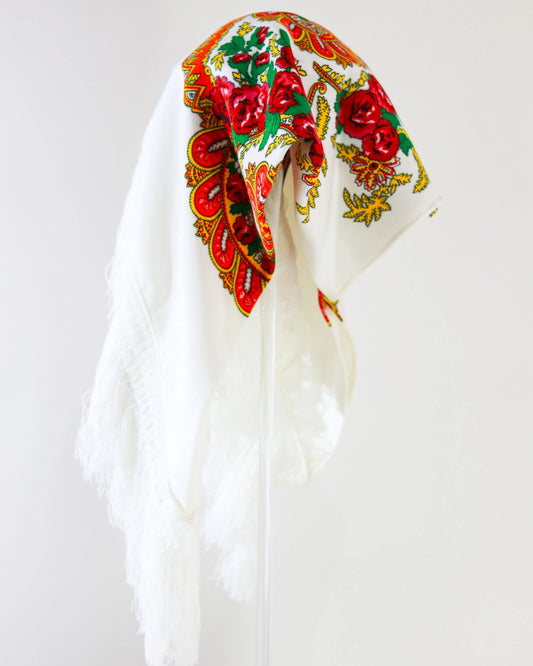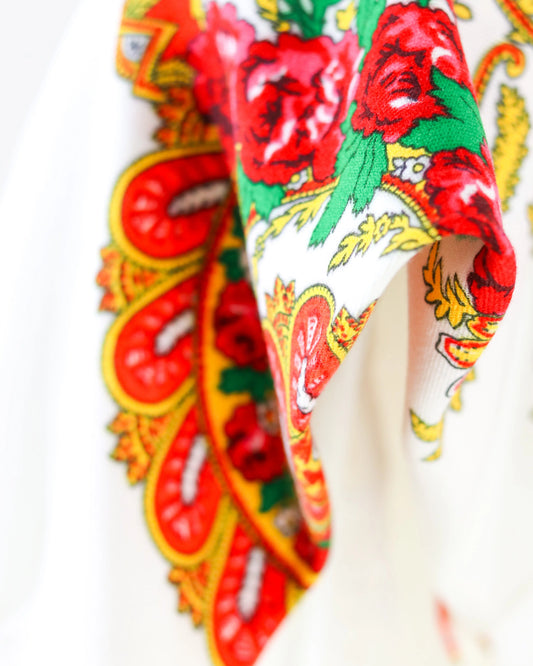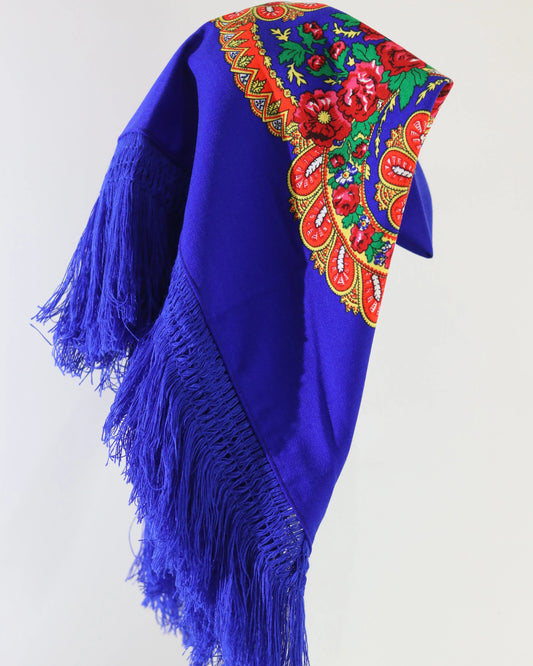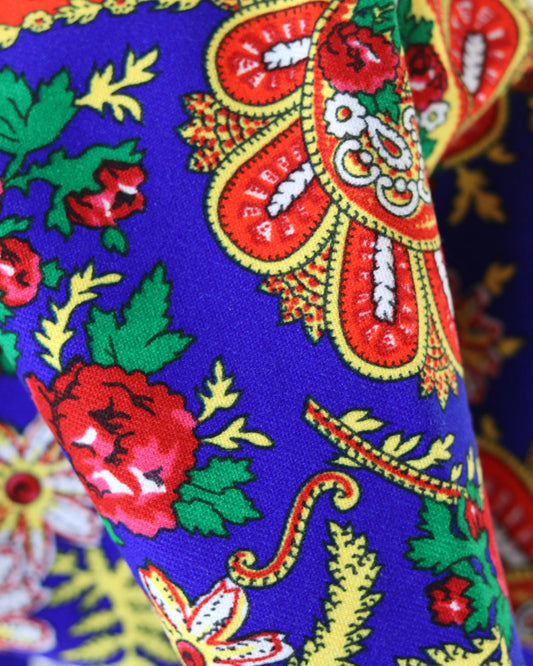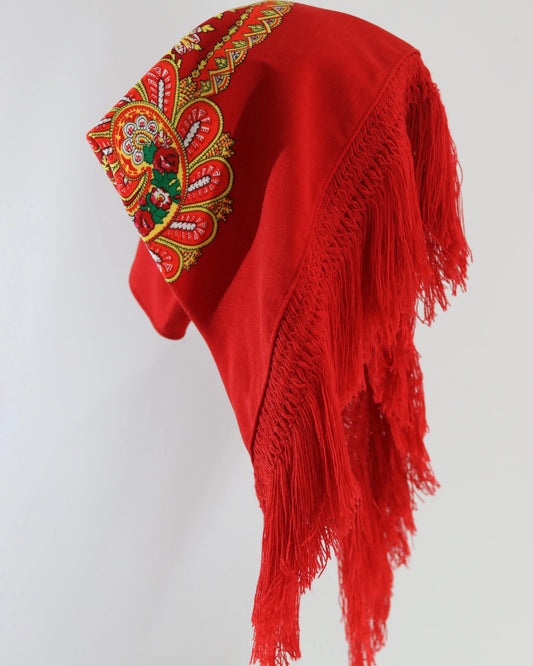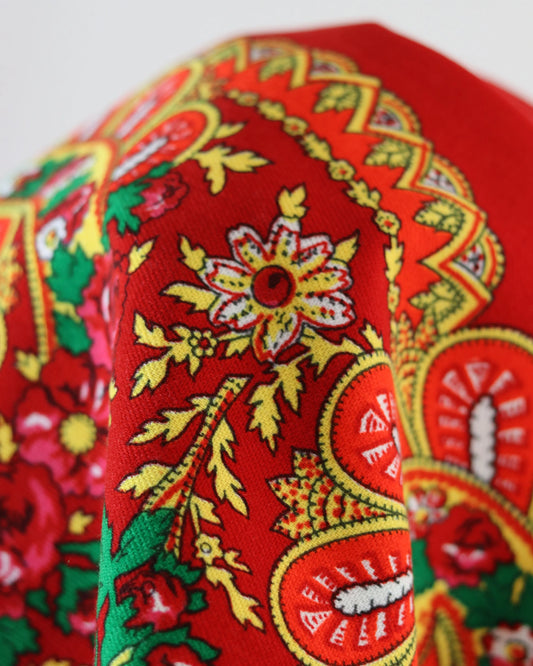Discover the costume museum and the memory of Viana's women
Upon entering the historic center of Viana do Castelo, one realizes that time has not stood still. It lives on in the fabrics, in the gold beads, in the stories of those who embroidered, wove, and dressed the identity of Alto Minho. The Costume Museum embodies this memory, embracing the past and passing it on, with an energy that comes from the women who, generation after generation, made clothing a silent manifesto.
Visiting this space is like entering a sewing room much larger than a house. It's like hearing the needle working, even if in silence. It's like realizing that each skirt, each scarf, and each pocket carries with it a gesture, a craft, a value.
A living museum in the heart of Viana
Located just steps from Praça da República, the museum creates bridges between rural life in Alto Minho and the city it has transformed. The curatorship prioritizes the dialogue between the authenticity of the costume and the contexts in which it was used, ensuring that the piece is not just a beautiful object, but a gateway to experience.
The focus is on the communities of the municipality and the region, particularly the women who, in each parish, created variations of costumes and embroidery with their own language. As you walk through the rooms, you'll discover complete costumes, period photographs, oral histories, and videos of pilgrimages. There are technical details, but there's also room to experience.
This is a museum with a rhythm. Some rooms require a long, leisurely stroll, others invite a short, curious look. The permanent exhibition intersects with temporary exhibits that delve into themes such as linen weaving, lovers' scarves, traditional gold, or the transformations of costume from the 19th to the 21st century.
Vianesa costume: layers of fabric and meaning
The so-called Vianesa costume isn't a single piece, it's a whole. It combines artisanal skills and family symbols. At the base, the white shirt, often embroidered. Over it, the vest that defines the silhouette. Then comes the skirt, the apron, the pouch hanging in front, the elaborate socks, and the slippers. On the head, the scarf, which changes its code according to age, occasion, mourning, or celebration.
Colors do the rest. Intense red, deep blue, saturated green. On a festive day, they shine brightly. On a workday, they give way to more subdued tones and more robust fabrics. Interpreting the attire is like interpreting the calendar: harvest, Sunday, pilgrimage, wedding, mourning.
The museum organizes these variations clearly. It's not a rigid display case. You can see the back, the stitch, the invisible hem. You can see how the garment was designed to last, to be repaired, to adapt to the body and to life.
Costume typologies: the essentials in a nutshell
The diversity could fit into an entire book. Still, it helps to have a reference map. The table below summarizes the most prevalent typologies, without overlooking local nuances.
| Type of outfit | Occasion | Dominant palette | Main materials | Characteristic props |
|---|---|---|---|---|
| Working farmhand | Work in the field, fairs | Terracottas, blues, browns | Thick wool, linen | Simple scarf, functional pocket |
| Party lavreira | Pilgrimages, Sundays | Bright reds, greens, blues | Fine wool, linen, colorful embroidery | Beaded necklaces, earrings, heart |
| Sunday driver | Mass, visits | Smooth combinations | Wool, linen, discreet lace | Best fabric scarf, earrings |
| Butler | Parade and pilgrimage | Strong colors and strict coordination | Quality wool, ribbons, applications | Layers of gold, embroidered pocket |
| Bride | Marriage | White, cream, gold details | Linen, lace, silk | Cross, heart of Viana, collections |
| Grief | Loss periods | Black and gray | Dark wool and linen | Restrained accessories, dark scarf |
Reading the costume as a system helps us understand the social sophistication within it. The details speak volumes: a tighter cross stitch, the width of the ribbon, the height of the apron, the shape of the pocket. Everything communicates.
Craft, time and gesture: what women's hands have preserved
The flax cycle is a long story. It's sown, uprooted, the stems stripped, dyed, shredded, and crushed, spinning the fiber into yarn. Then the loom enters the picture. In many homes, the loom was more than a tool: it was a calendar, it was a household economy.
Embroiderers reveal another dimension. The design migrates from paper to fabric, the thread learns its curve, the flower emerges from a stitch the hand has repeated a thousand times. The handkerchiefs speak, literally. With phrases that hold affection, with spellings that are a memory of those who wrote as they heard, with colors that arrive before words.
There's also the practice of meticulous mending. A hem redone from the inside, almost invisible. A piece passed from mother to daughter. The museum doesn't hide its use: the worn piece is proof of life. And that changes everything.
Viana's gold and the language of shine
Viana do Castelo has built a very unique relationship with gold. More than an investment, it's a language. The Maltese Cross, the heart of Viana, earrings, beads, shackles. The pieces are arranged in layers, dressed as if writing a clear sentence. During the pilgrimage, the shine is evident. But it's not empty ostentation. It carries stories of dowry, of savings, of travel.
Anyone who enters the gold room immediately notices the skill of traditional goldsmithing. Each filigree requires patience, controlled fire, and a keen eye. The piece gains shape and lightness without losing strength. In many homes, women guarded and managed these pieces, deciding combinations for each occasion, and negotiating sales and purchases when life got tough.
The museum reveals the grammar of gold through context. There's the object, yes, but there are also biographies, photographs of stewards, records of pilgrimages, and descriptions of uses that changed over the centuries.
Festival, pilgrimage and female affirmation
Anyone familiar with Senhora da Agonia knows that the stewardship parade isn't just a parade. It's a stage for a community recognizing and renewing itself. The stewards, impeccably dressed and carefully arranged, walk amid applause. The choreography is traditional, the determination is contemporary.
The festival gives women visibility that goes beyond costumes. It's cultural leadership, refined technique, and organization. The entire family participates, but the central role of women in preparing the costumes, choosing accessories, and maintaining the impeccable style is evident.
At the museum, photographs and films help us understand the energy of the pilgrimage. We notice the details that quickly pass by on the street. The knot in the scarf. The alignment of the ribbons. The silence before leaving home. An intangible heritage that vibrates every summer.
From the village to the showcase: how the museum investigates and cares
Behind the visible rooms, constant work is underway. Textile conservation requires controlling light, humidity, temperature, and pests. Each piece has a file, high-resolution photographs, a history of provenance, and handling recommendations. Interventions are minimal and reversible, respecting natural aging.
The research isn't limited to the archive. Fieldwork includes interviews with artisans, video recordings of techniques, and collaborations with local associations and schools. The museum serves as a sharing platform, inviting both those who know how and those who want to learn.
This dialogue with the community ensures that the costume doesn't crystallize. New pieces come in, others go to rest. Temporary exhibitions test hypotheses, compare parishes, showcase rare variations, and cross-reference objects with documents and sound.
What to look at carefully: notes from someone who likes details
- Pockets embroidered with floral and zoomorphic motifs. Small works that tell big stories.
- Wool socks with geometric designs. The mathematics of beauty in stitches and counts.
- Valentine's handkerchiefs from Minho with direct and tender messages. The intimate voice in embroidered lettering.
- Filigree hearts from Viana, with nuances of manufacture and different eras.
- Party aprons with applications and ribbons that play with the light.
- Old photographs that help to read the costume on the body and in place.
Those who take the time to observe come away with a more educated outlook. They gain vocabulary and sensitivity.
City itineraries to extend your visit
A visit to the Costume Museum naturally connects to a tour of Viana. A possible itinerary:
- Republic Square: architecture, fountain and movement.
- Old Town Hall and shopping streets with traditional jewelry stores.
- Sanctuary of Santa Luzia: wide view of the city, the river and the sea.
- Gil Eannes Ship: maritime memory that dialogues with the culture of work and departure.
- Municipal museums and galleries, highlighting collections of decorative arts and regional crafts.
- Pilgrimages and local fairs, when the calendar coincides, to see the costume in a live context.
This circuit helps connect the museum with the city that sustains it. The costume returns to the street, where it came from.
Education, workshops and participation
A museum dedicated to crafts must open its doors to hands-on experiences. Educational programs invite young people and adults to try embroidery stitches, learn how to set up a loom, identify threads and fabrics, and compare techniques. Workshops led by artisans demonstrate that knowledge is alive and shareable.
For those researching, there are useful resources: specialized bibliography, digital archives of images and pieces, and controlled access to reservations by appointment. Collaborations with universities, designers, and photographers have emerged that reimagine costumes in an informed way.
This dynamic keeps tradition in dialogue with the present. It doesn't romanticize the past. It recognizes the value of technical rigor and the right to creative reinvention when there is respect for origins.
The social role of Viana women reflected in their attire
For decades, many families in Alto Minho lived with the temporary absence of men who emigrated to the coast or abroad. Women maintained the home, the farm, the bills, and the community. The costume speaks of this silent work and the pride in looking good on a festive day, despite the difficulties.
The domestic economy was complemented by linen, embroidery, and the sale of small-scale production. Clothes were built to last, adapted to bodies and circumstances. The passing of pieces between generations strengthened bonds and identities. The museum captures this economy of affection and pragmatism.
Seeing the costume today is recognizing this discreet leadership. A leadership built on care, technique, and public presence at pilgrimages, in associations, and in schools.
Tradition and fashion: fertile intersections
Contemporary creation views clothing with curiosity and respect. Fabrics, silhouettes, stitches, and accessories have been reinterpreted by brands and designers working on a small scale. The museum, with its collection and documentation, offers material for informed dialogue.
Without replicating the old, it's possible to learn from economy of means, quality materials, and functional design. The result is contemporary pieces that speak the language of Minho without falling into caricature. They become part of everyday life, they become part of the stage, and they help to promote crafts that deserve a future.
To plan the visit
- Location: historic center of Viana do Castelo, in a pedestrian area.
- Recommended time: 60 to 90 minutes for the permanent exhibition; longer if there is a temporary exhibition.
- Best time: Weekday mornings are usually quieter.
- Accessibility: find out about elevators and ramps, considering that this is an adapted building.
- Tickets: check updated prices on the official channels of the municipality or museum.
- Photographs: generally permitted without flash in designated areas. Confirm on site.
- Shop: reference titles on costumes and crafts, pieces by local artisans and quality reproductions.
A simple tip: bring a notebook. Drawing an embroidery detail or jotting down a motif helps you focus your attention.
Questions the museum asks those who enter
What does the costume tell us about the place and time in which it was worn? Who has the knowledge to reconstruct a point that is fading into oblivion? What place does gold occupy in the balance between memory and real life? Where does tradition begin, and where does invention that respects origins begin?
These are questions that can't be resolved in an afternoon. They require conversations at home, repeat visits, and attentive listening to those who ask. The Costume Museum creates the space for this, uniting technique, history, and experience.
A memory that continues to be written
The collection grows, research continues, pilgrimages renew the calendar. The city continues with the river and the sea, and the women of Viana continue to shape this memory with the same determination as those who sew by hand and leave no stitch unturned.
When visitors step out onto the street, they might see other scarves and skirts passing by. They might notice a heart hanging from their chest. And perhaps, from then on, they'll read Viana more closely. Because clothing here isn't just clothing. It's language, it's work, it's affection in the form of fabric and light.

